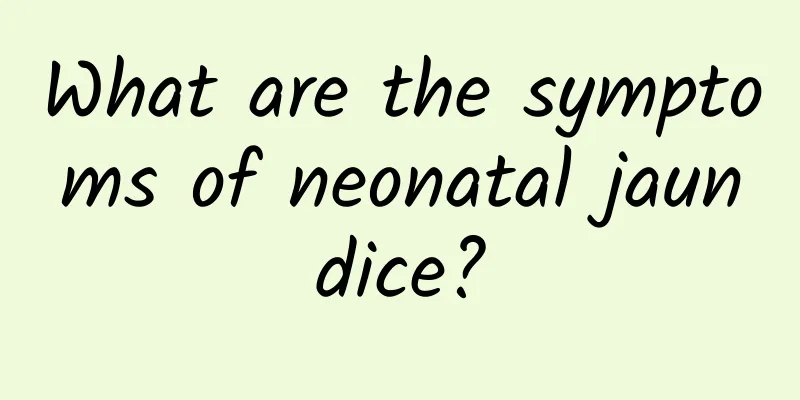What are the symptoms of neonatal jaundice?

|
The most typical symptom of neonatal jaundice is yellowing of the skin and whites of the eyes. In severe cases, it may be accompanied by drowsiness, reduced feeding or slow reaction. Mild symptoms are mostly physiological jaundice, which will not have a significant impact on health, while severe cases may be pathological jaundice and require timely medical treatment. 1. Yellowing of the skin and whites of the eyes The most notable feature of neonatal jaundice is the yellowing of the skin and whites of the eyes, which usually starts on the face and gradually extends to the trunk and limbs. It usually appears 2-3 days after birth. Physiological jaundice usually gradually subsides within 1 week, while premature infants may continue to have yellowing for more than two weeks after birth. If the yellowing of the skin is found to expand or deepen, you should be highly alert to pathological jaundice. 2. Drowsiness or slow response Pathological jaundice may cause hyperbilirubinemia and affect the central nervous system. Newborns may be drowsy, difficult to wake up, cry weakly, or react slowly to external stimuli. This is one of the danger signals. If accompanied by such symptoms, the baby should be sent to the doctor immediately to check the serum bilirubin level so as to treat the symptoms. 3. Reduced breastfeeding When jaundice occurs, some newborns may have a decreased appetite and weaker sucking ability. This may be caused by drowsiness or other complications caused by jaundice itself, such as cholestasis. Parents need to observe the baby's feeding situation regularly to ensure that he or she is eating normally. 4. Dark urine and abnormal stool color Severe jaundice may even cause the urine to appear dark yellow, and the baby's stool may become lighter or grayish white due to abnormal bilirubin metabolism. Paying attention to these signs will help further determine the degree and nature of jaundice. For neonatal jaundice, parents need to observe the range, color and behavior of the baby in time. If it is mild physiological jaundice, breastfeeding can promote bilirubin excretion, and appropriate sunlight exposure should be avoided to avoid direct exposure to strong sunlight. However, if pathological jaundice is suspected, medical treatment must be sought as soon as possible. Professional treatments include blue light therapy, exchange transfusion therapy or drug therapy such as enzyme inducers. Jaundice should not be ignored, especially pathological jaundice, which may be life-threatening or cause irreversible damage to the nervous system. If abnormal symptoms are found, contact a doctor in time to evaluate the condition and take treatment measures to ensure the healthy growth of the newborn. |
>>: Should children take anti-inflammatory drugs for cough?
Recommend
What are the symptoms of pneumonia in children?
We know that Chinese medicine has four steps to d...
How long does it take for a child to get out of bed after hernia surgery?
Children can usually try to get out of bed and mo...
Can pneumonia in children heal itself?
Very few cases of pneumonia in children can heal ...
What are the symptoms of congenital megacolon in newborns?
Hirschsprung's disease is a congenital diseas...
How to treat chronic cough in children
Chronic cough in children mainly needs to be trea...
How to prevent indigestion in babies? What is the best food to eat?
Children are often unaware of the cause of their ...
Which part of the body should be exposed to the sun for jaundice? How many times a day should the sun be exposed to the sun for
In the obstetrics and gynecology department, we a...
Nursing children with pneumonia should not be blind
Among lung diseases, pneumonia can be said to be ...
How to treat tonsillitis caused by cold in children
Tonsillitis caused by a cold in children needs to...
Misdiagnosis and mistreatment of hernia in children can lead to life-long consequences
When it comes to pediatric hernia, I believe ever...
Can hand, foot and mouth disease be transmitted to adults? There is a small probability. Pay attention to the transmission route to prevent it.
Regarding hand, foot and mouth disease, the child...
Can hand, foot and mouth disease be caused by wind?
Hand, foot and mouth disease is a febrile, rash-c...
What are the symptoms of hand, foot and mouth disease in adults?
Symptoms of hand, foot and mouth disease in adult...
Will the seizure recur after recovery?
Will there be a relapse after the seizure is cure...
How many eggs a day is the most nutritious? What are the benefits of eating more eggs?
Eggs are one of the recognized nutritious foods i...









